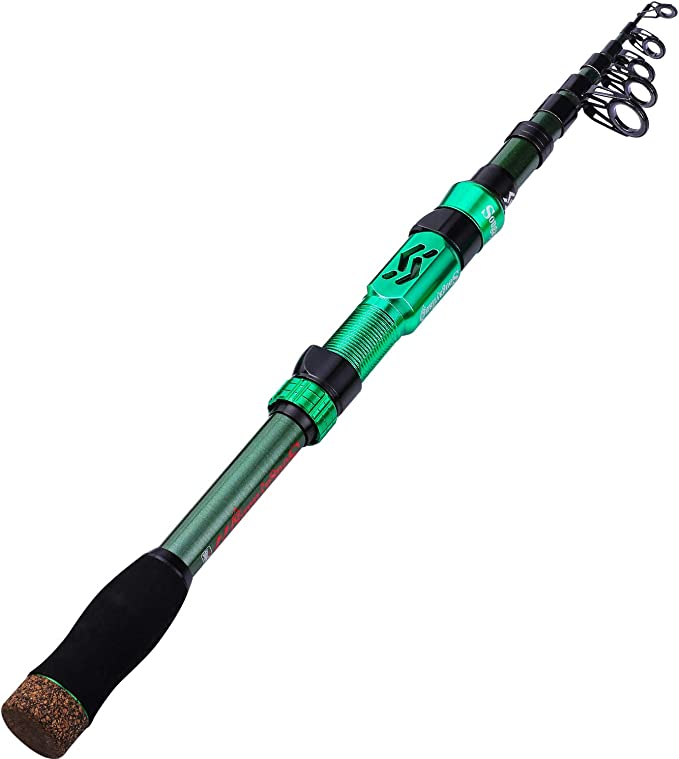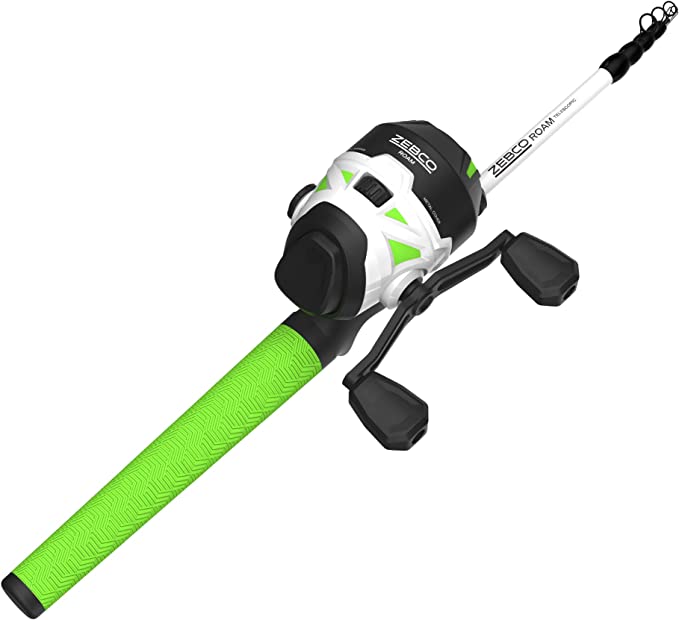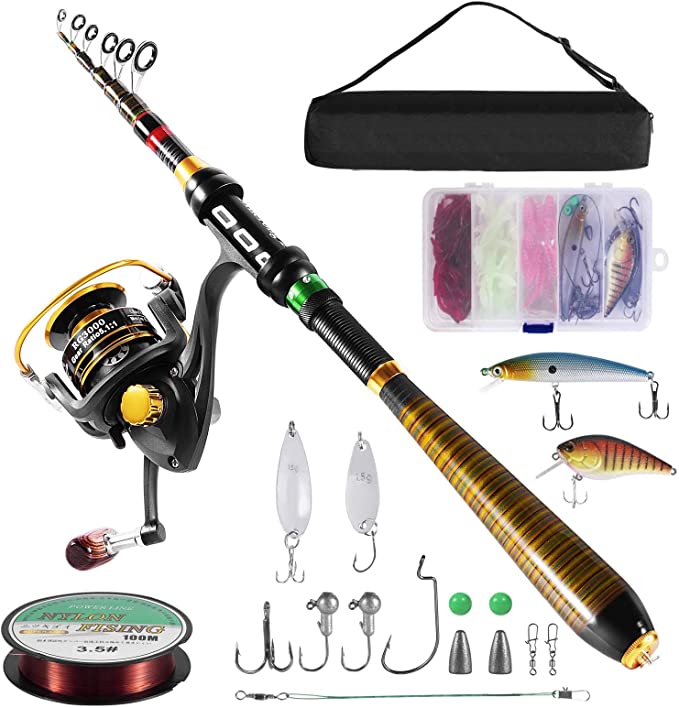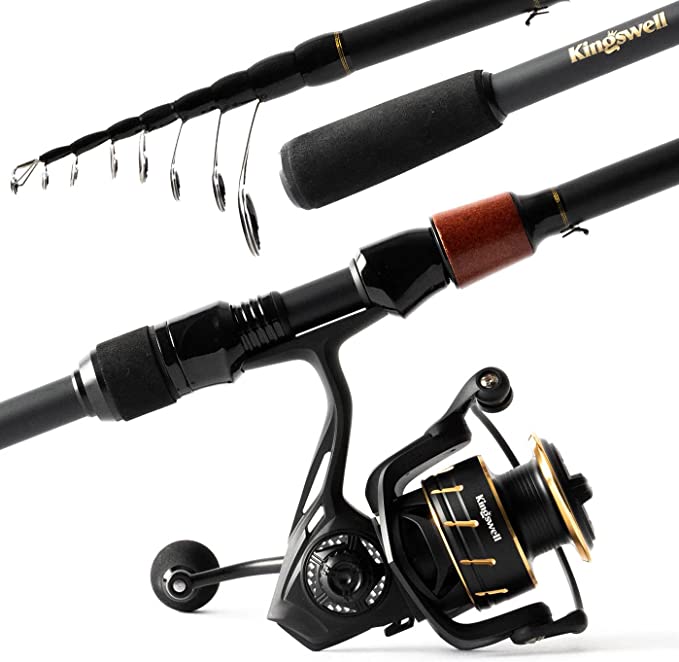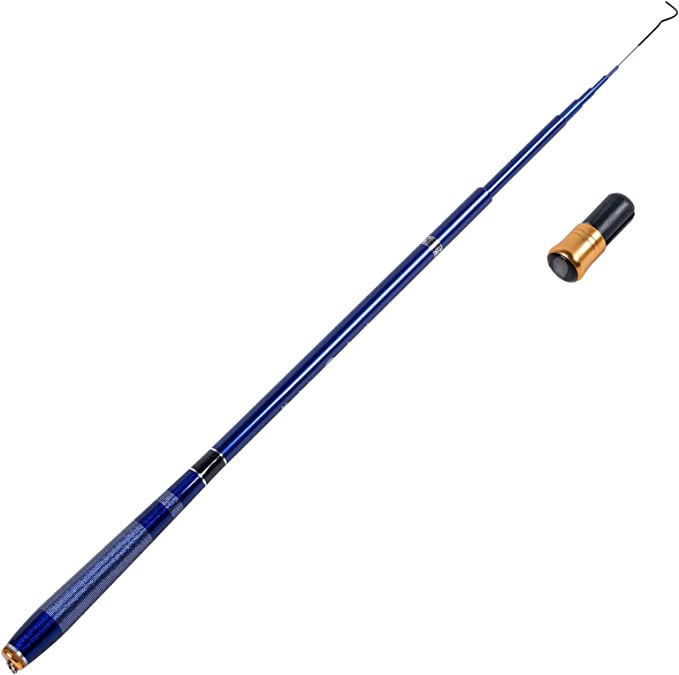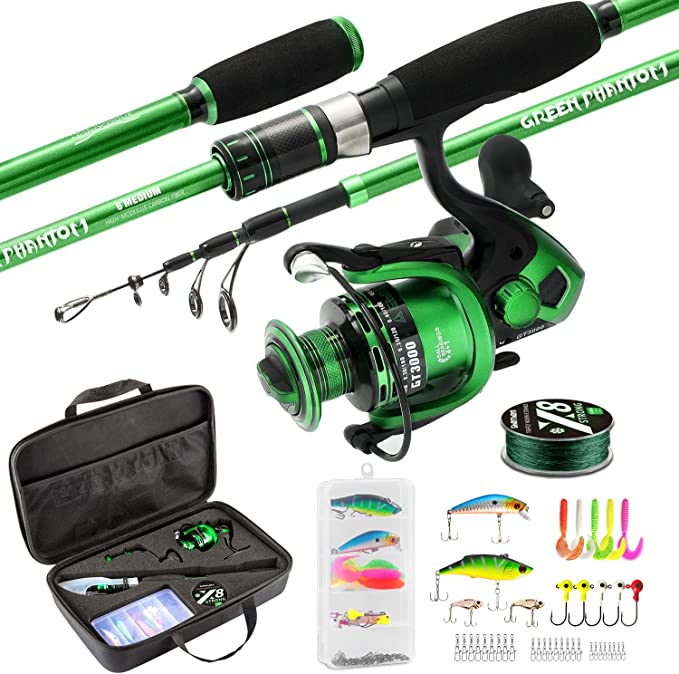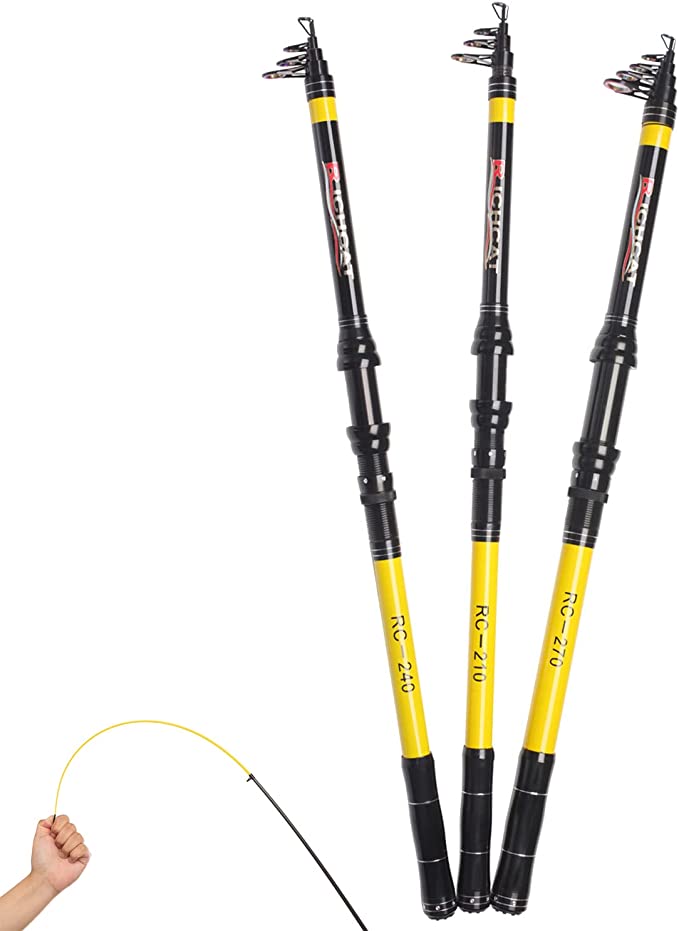The Unseen Engineering: How a Telescopic Fishing Rod Packs Generations of Science into Your Backpack
Update on Aug. 1, 2025, 5:57 a.m.
There is a moment known to every explorer, a quiet pang of regret that strikes with the force of a revelation. It happens when you crest a remote mountain pass to discover a pristine alpine lake, its surface shimmering with life. It happens during a coastal drive, when a hidden cove reveals itself, calm and inviting. The perfect spot. The perfect moment. But the one tool you need to connect with that water, your fishing rod, is leaning against a wall in your garage, hundreds of miles away. For generations, this was the angler’s curse: being tethered by the tyranny of length.
The story of the modern telescopic fishing rod, like the Sougayilang OnlyBrave, is not just about convenience. It’s a story about liberation. It’s a gripping tale of scientific pursuit, tracing a direct line from unwieldy bamboo poles to a pocket-sized giant of engineering that fits in your backpack. To truly appreciate this marvel, we must first journey back in time.

A History of Fighting Length
For centuries, the fishing rod was defined by its limitations. Early rods were crafted from heavy woods like greenheart or long sections of bamboo. While functional, they were cumbersome. The first attempt at portability led to multi-piece rods, joined by heavy, ill-fitting brass ferrules that created weak points and deadened the rod’s feel. The angler gained some portability but sacrificed performance.
The first true revolution came after World War II, born from innovations in material science. The arrival of fiberglass, pioneered by companies like Fenwick, changed everything. Using hollow E-Glass blanks, engineers could create rods that were significantly lighter, more durable, and more affordable than their natural counterparts. Suddenly, high-performance fishing was accessible to the masses. This was the dawn of the modern rod, but it was only the beginning. The quest for the ultimate combination of strength and lightness had just begun.

The Graphite Leap and the Soul of a Modern Rod
The next great leap came with the aerospace industry: carbon fiber, known in the fishing world simply as graphite. This material was a game-changer, boasting a phenomenal stiffness-to-weight ratio. It allowed for the creation of rods that were feather-light, incredibly strong, and so sensitive that an angler could feel the subtlest changes in the underwater terrain. This is the technological DNA inherited by today’s advanced rods.
When you see a specification like 24-ton carbon fiber on a rod like the OnlyBrave, it’s easy to misunderstand. This isn’t a measure of weight. It’s a technical grade of the material’s tensile modulus—a scientific term for its stiffness and resistance to bending. A higher modulus means the rod blank is stiffer, allowing it to store and release casting energy more efficiently and transmit vibrations (like a fish’s bite) more clearly.
But pure carbon fiber can be brittle. This is where brilliant composite engineering comes into play. The blank is not pure carbon; it’s a Polymer Matrix Composite (PMC), blending the high-modulus carbon fibers with more flexible E-Glass fibers. Think of it like reinforced concrete: the carbon provides the rigid structure (the gravel and cement), while the E-Glass acts as the steel rebar, drastically increasing the material’s fracture toughness. This prevents a catastrophic failure under stress, giving the rod the resilience to absorb the sudden lunges of a powerful fish.
Precision in the Palm of Your Hand
While the blank is the soul of the rod, its components are the finely tuned organs that allow it to function. The reel seat—the part that anchors your reel—is a critical point of contact. On the OnlyBrave, this component is not cast or molded; it is CNC-machined from a solid block of aluminum.
CNC (Computer Numerical Control) is a subtractive manufacturing process where a computer guides high-speed cutting tools to carve out a design with microscopic precision. This process creates a reel seat with zero wobble, ensuring that every turn of your reel handle translates directly into pulling power. The aluminum is then typically anodized, creating a hard, corrosion-resistant outer layer of aluminum oxide that can withstand the rigors of saltwater spray and rough use.
Taming the Invisible Forces of Friction and Heat
Further down the rod, we find its unsung heroes: the line guides. As you cast, your fishing line can accelerate to incredible speeds, generating intense friction and heat. This is especially true for modern braided lines, which are thin and can be damaged by excessive heat.
The solution is a dual-material masterpiece. A stainless steel frame provides the corrosion-resistant structure, but the magic happens in the inner ring. This ring is made of a polished ceramic, often a form of Alumina (Aluminum Oxide). Ceramic is one of the hardest and most heat-resistant materials available. Its incredibly low coefficient of friction allows the line to fly through with minimal resistance, enabling longer, smoother casts. Simultaneously, it acts as a heat sink, rapidly dissipating the thermal energy that could otherwise weaken your line at a critical moment.

A Philosophy of Freedom
Ultimately, the telescopic fishing rod is more than the sum of its parts. It is the physical embodiment of a modern design philosophy that has swept through the entire outdoor gear industry: the pursuit of ultralight, compact, and reliable equipment. It’s a philosophy that believes your gear should enable your adventure, not define its limits.
The same principles of material science and precision engineering that create a backpacking tent that weighs less than a water bottle, or a stove that fits in your pocket, are at play in this rod. By understanding the unseen engineering—the modulus of carbon, the toughness of composites, the precision of CNC, and the physics of friction—we gain a deeper appreciation for the tools that give us the freedom to explore. The next time you slide that compact tube from your backpack and, with a flick of the wrist, extend it into a full-length fishing rod, take a moment. You’re not just holding a tool. You’re holding a century of scientific progress, ready to connect you to the wild.

